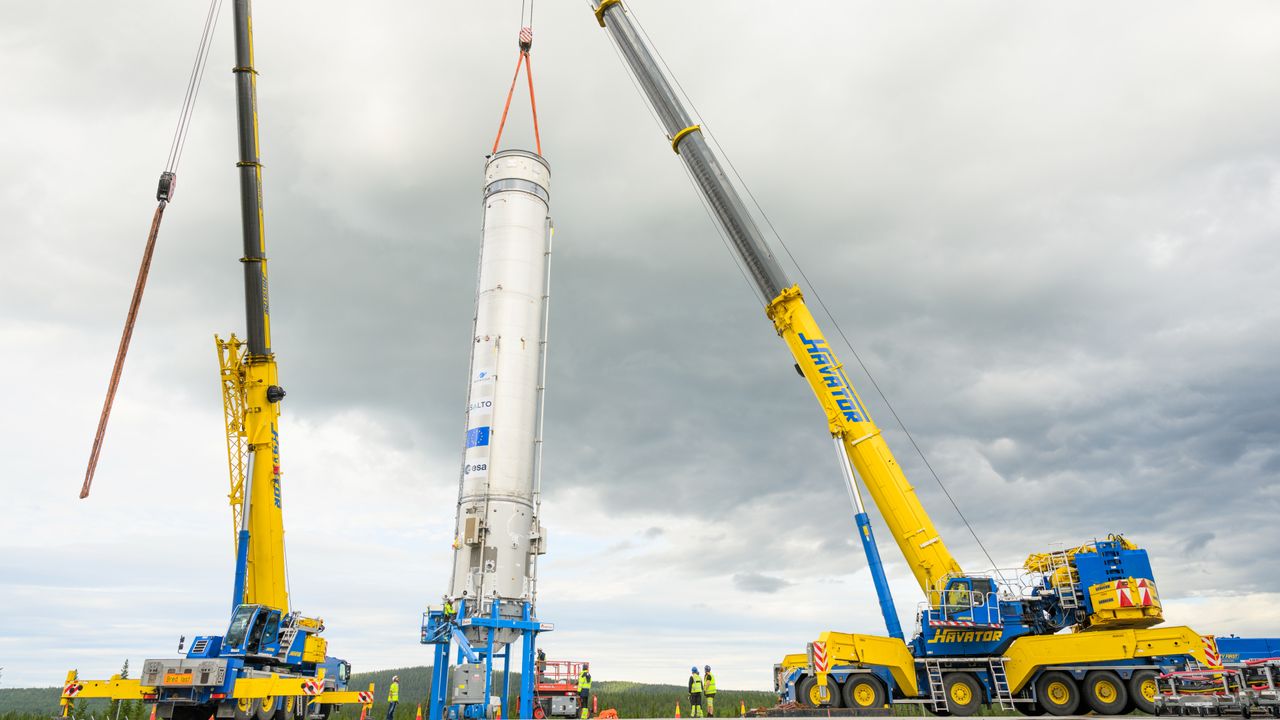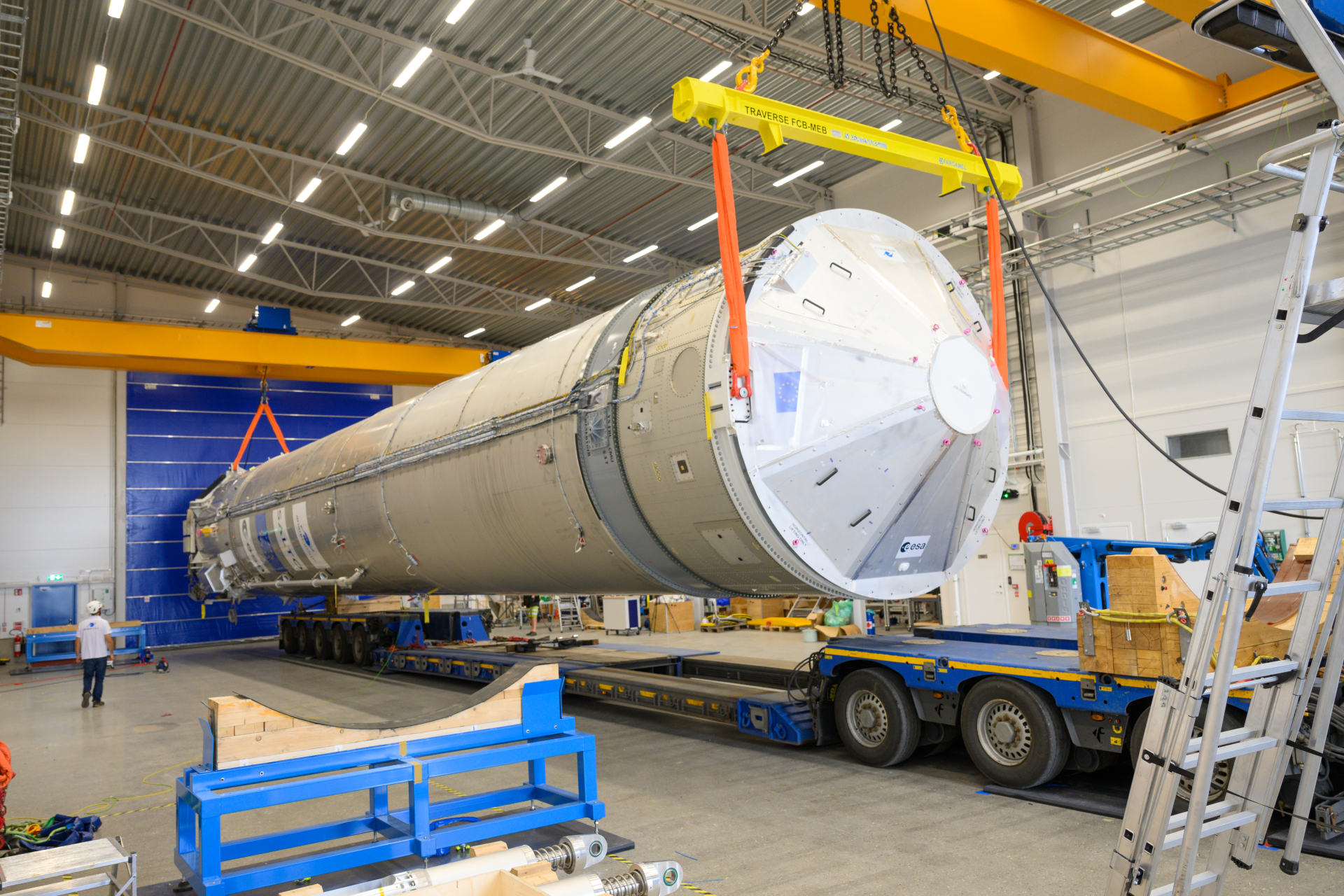
Europe's ArianeGroup is set to fly a series of demonstrators in a bid to develop sovereign reusable launch capabilities.
"Callisto, Themis and Skyhopper are different demonstration programs contributing to the development of a European reusable launch vehicle," Franck Koebel of France-based ArianeGroup said during a technical presentation at the International Astronautical Congress in Sydney, Australia, on Oct. 1.
The effort is built around Prometheus, described as a reusable, high-thrust, low-cost methane-liquid oxygen rocket engine that will power the demonstrators. Testing has already begun with early systems trials in France, while current and upcoming campaigns are being run in Kiruna, Sweden, near the Arctic Circle.
The first Themis vehicle module — named T1H (Themis-1 engine-Hop), a 98.4-foot-tall (30 meters), 11.5-foot-wide (3.5 m) demonstrator — has already been transported to Esrange Spaceport in Kiruna. The vehicle has had landing legs installed, part of the preparations for a launch and landing test expected to take place in the near future.
Themis aims to demonstrate a vertical landing in a low-altitude test, demonstrating stable descent, a soft touchdown and controlled fuel use.
Koebel outlined a roadmap that will see Themis be followed by the later Callisto and Skyhopper efforts, which introduce multi-engine configurations and foldable landing legs. "It's a progressive increase in complexity. First non-foldable landing legs, then foldable ones, and later multi-engine configurations," Koebel said.
The flight campaign will be organized through the SALTO (reuSable strAtegic space Launcher Technology and Operations initiative) project as part of the European Union's Horizon Europe programme.
"The challenge is not particularly the science or the physics behind it, but rather: How in Europe are we able to master the needed technologies?" Koebel said.

The pathway aims at a full-stage recovery demonstration around 2027-2028, with potential operational capability to follow in the early 2030s, depending on results and funding continuity from the European Space Agency and elsewhere. The program, according to ArianeGroup, aims to boost European autonomous access to space.







